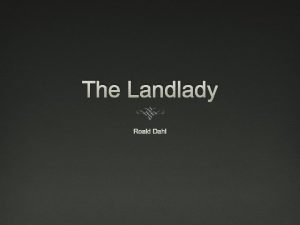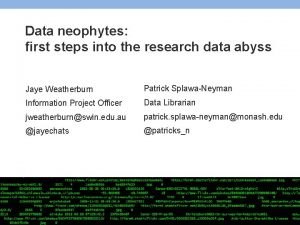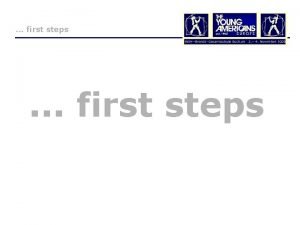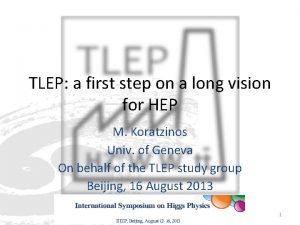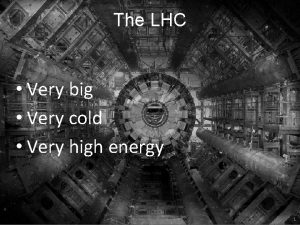TLEP the very first steps TLEP the very













- Slides: 13

TLEP. . . the very first steps

TLEP. . . the very first steps

TLEP. . . Lattice Design based on considerations & experience from LEP (W. Herr) / LEP 3 (Y. Cai) Arc: 96 standard Fo. Do cells & 2 half bend cells at beginning and end length of arc: 2. 8 km length of straight section: 0. 45 km Dx

TLEP. . . Lattice Design Arc: the single Fo. Do cell until now. . . 2 dipoles / 2 quadrupoles to be optimised according to hardware engineering short cell length: ≈ 30 m advantage: small betas small dispersion small emittance but: realistic hardware design ?

TLEP. . . Lattice Design Arc: the single Fo. Do cell phase advance: 900 / 600 to be discussed. . . 900 horizontally: small dispersion & emittance 600 vertically: small beam size (βy) and better orbit correction tolerance (LEP experience)

TLEP. . . Lattice Design Hardware: 2 dipoles per Fo. Do l(B 0) = 10. 5 m l (QF) = l(QD) = 1. 5 m B 0 ≈ 0. 074 T G ≈ 85 T/m Complete Arc: 4700 dipoles and quadrupoles

TLEP. . . Lattice Design The straight sections: 6 matching quadrupoles, 8 “empty” Fo. Do cells, dispersion free 6 matching quadrupoles straight Arc straight

TLEP. . . Lattice Design The Ring: a kind of three times LEP 24 Arcs, 24 straight sections ? ? one or two mini-beta-insertions ? ?

TLEP. . . Lattice Design The Ring: a kind of three times LEP Main Parameters: βx= 45 m βy= 55 m L= 78996 m

TLEP. . . Lattice Design The Ring: a kind of three times LEP Main Parameters: momentum compaction MADX: αcp =2. 7*10 -6 energy loss per turn: MADX: αcp =10. 4 Ge. V

TLEP. . . Lattice Design The Ring: a kind of three times LEP Main Parameters: Damping & Beam Emittance ε = 3. 4*10 -10 rad m. . . quite a bit smaller than required. -> optimise optics for higher ε -> install wigglers for ε control Synchrotron Radiation Power Np = 9*1012 ΔU 0 = 10. 4 Me. V T 0 = 263 μs

TLEP. . . questions to be discussed crab waist / mini beta / local Q’ control ? ? In conclusion, we have demonstrated that beamstrahlung suppresses the luminosities of high-energy e+e− storage rings as 1/E 4/3 at beam energies E > ∼ 70 Ge. V for head-on collisions and E >∼ 20 Ge. V for crab-waist collisions. Very importantly, beamstrahlung makes the luminosities attain-able in head-on and crab-waist collisions approximately equal above these threshold energies. At 2*E = 240 500 Ge. V, beamstrahlung lowers the luminosity of crab-waist rings by a factor of 15 -40.

TLEP. . . the next steps mini beta / local Q’ control ? / crab waist ? ? * mini beta insertion: . . . “LEP-like version” preferred how many. . . first guess: two no crab waist / no ILC like mini β * optimisation of cell structure: phase advance / hard ware * damping wigglers: emittance control * chromaticity compensation Y. Cai * layout interaction region / beam separation / synchrotron radiation at IR * cell structure modification for different energies
 Tlep
Tlep Very bad to very good scale
Very bad to very good scale Multiplication of scientific notation
Multiplication of scientific notation There is very few soup in the bowl
There is very few soup in the bowl Receiving table/area
Receiving table/area Food quantifiers exercise
Food quantifiers exercise What is axial movement in dance
What is axial movement in dance The landlady questions
The landlady questions Cross cultural communication
Cross cultural communication Texas health steps quick reference guide
Texas health steps quick reference guide First steps monash
First steps monash Hình ảnh bộ gõ cơ thể búng tay
Hình ảnh bộ gõ cơ thể búng tay Slidetodoc
Slidetodoc Bổ thể
Bổ thể







